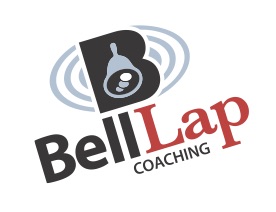Fuel Your Workouts Right
You’re halfway through that last tempo interval, and your mind starts to wander to your refrigerator and to imagine what delicious concoction you’ll feast on when you get home. “Focus!” you tell yourself, and you turn the pedals steadily until you can hit the final lap button. As you spin home from there, however, you let yourself get back to meal fantasizing! We all know that without some guidance, our post-workout refrigerator dash can turn into indulging vs refueling. However, in order to reap the benefits of that hard work you just did as well as to prepare to tackle the next workout, it’s essential to give you body the specific nutrients it needs for recovery.
During intense exercise, your body uses blood glucose as well as muscle and liver glycogen stores as fuel, meaning that post-workout or post-race, it is essential to replenish these stores so that you are ready for your next training session or race. Ingesting carbohydrates is the key to replenishing glycogen stores, but since not all carbohydrates are created equally, there are two factors to consider when choosing what carbohydrate foods to consume: glycemic index and glycemic load.
Glycemic Index (GI) is a measure of how quickly a specific source of carbohydrate releases glucose into your bloodstream, and foods are given a rating of 0-100 on this scale. While in general, it is preferable to consume low GI foods to avoid spikes in blood sugar, post-workout or post-race, foods higher on this scale are ideal as the goal then is to quickly deliver glucose back into your bloodstream. Foods with a GI over 70 are considered high-glycemic carbohydrates. Studies have demonstrated that glycogen replacement is increased by 30% in well-trained cyclists who eat high versus low GI foods for 24 hours after 2 hours of exhaustive exercise (Burke, Collier & Hargreaves 1993).
While Glycemic Index indicates the speed at which a carbohydrate affects glucose levels, Glycemic Load (GL) is a measure of how large the effect will be. It is calculated by multiplying a food’s GI by the number of grams of carbohydrate in a serving of that food, then dividing by 100. Foods with a GL of 20 or more are considered high-GL carbohydrates. A food could have a high GI but a low GL, which is why it is key to consider both measures. As an example, a food like watermelon, with a relatively high GI of 72, has a low GL of 4 because the total amount of carbohydrates in a serving of watermelon is very small. Hence watermelon will not have a large impact on blood glucose. A sweet potato, on the other hand, with a similar GI of 70, has over 5x the GL of watermelon (22) because there are more carbohydrates in a serving of sweet potato.
To best replenish glycogen stores after training or racing, it is important to consider both the GI and GL, so that you take into account both how quickly the carbohydrate will act and how large of a total effect it will have. Some good high GI/GL carbohydrate choices for recovery are white rice with maple syrup, potatoes, sweet potatoes, fruits like pineapple or kiwi, rice cakes with jam. To determine the amount of carbohydrate to ingest, aim for 1.5-2 grams of carbohydrate per kilogram of body weight. For a 150 pound (~68kg) person, that translates to 100-140 grams of carbohydrates. As a reference, one cup of cooked white rice contains almost 60 grams of carbohydrates, and a medium sized white potato has around 45 grams. The app MyFitnessPal is a great resource for looking up the carbohydrate content of foods. In addition to the carbohydrates, recovery is maximized by adding 10-15 grams of protein. However, it is advisable to avoid much fat in a recovery meal as it will act to reduce the GI of the food, slowing the rate at which the glucose is released into your bloodstream.
Here are a couple of easy go-to recovery meals:
1 - If you’re on the road, bring a smoothie with your favorite protein powder, a banana, 2 tablespoons of montmorency cherry concentrate, and some leafy greens.
2 - If you are able to prep ahead, make some white rice*, add some steamed or sauteed veggies and chicken (or other protein source), and drizzle with some Braggs liquid aminos or your favorite low-fat seasoning.
3 - Another make-ahead option is to boil some white potatoes* or sweet potatoes* and add a couple eggs (or other protein source).
*Base the amount of rice, potatoes, or other cards on the guideline of 1.5-2 grams of carbohydrates per kilogram of body weight.
